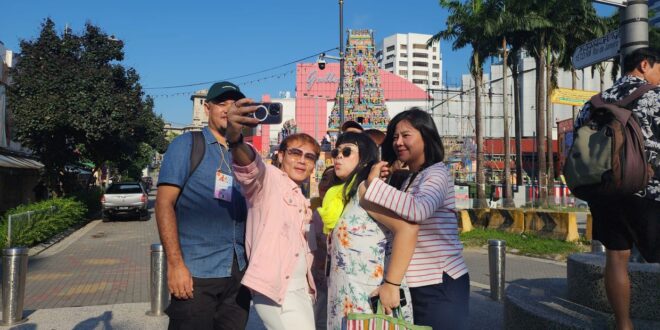JOHOR BARU: More than 180 artists from 20 countries are in Johor for a five-day art camp to gain knowledge and obtain artistic inspiration from the southern state.
Organising chairman Tan Chai Puan said throughout the international Art-Bridge Camp, which kicked off on Thursday (July 11), participants would get a chance to know Johor better through its culture and history.
He said the visitors were brought to downtown Johor Baru as well as the Tanjung Piai National Park and Kukup fishing village in Pontian.
“At the heart of Johor Baru, the participants journeyed on foot to explore the city and take in its cultural features on Thursday (July 11).
“This was also the first time such a camp was organised in the southern part of the country,” said Tan, who is also Southern University College (SUC)’s museum and art gallery director.
Among the places they visited were the Johor Baru Chinese Heritage Museum, Arulmigu Rajamariamman Devasthanam Hindu temple, Jalan Wong Ah Fook and the Jalan Tan Hiok Nee cultural street.
The participants, mostly oil painters from Asean as well as South Korea, Japan, Hong Kong, Taiwan, China, Sri Lanka, Nepal, India, Poland, Spain and France, also took the opportunity to take photos of iconic landmarks such as the state’s former administrative centre Bukit Timbalan.
The artists were also encouraged to incorporate their newfound knowledge and inspiration into their artwork, which would later be displayed at the R&F Princess Cove Mall for public viewing from Saturday until Monday (July 13 to 15).
SUC chairman Datuk Vincent Tan said the event was to celebrate the history of Johor and the city of Johor Baru.
“The camp gave participants the opportunity to look at how the kangchu system, developed by Chinese settlers some 180 years ago, contributed to the state’s progress, as well as the significance of pepper and gambier to Johor as the main economic drivers back then.
“It was also in line with the 100th anniversary of the Johor Causeway which connects Malaysia and Singapore,” he said.
He added that the artworks from the camp would later be donated to SUC’s gallery for charity purposes.
 BeritaKini.biz Berita Viral Terkini di Malaysia
BeritaKini.biz Berita Viral Terkini di Malaysia





